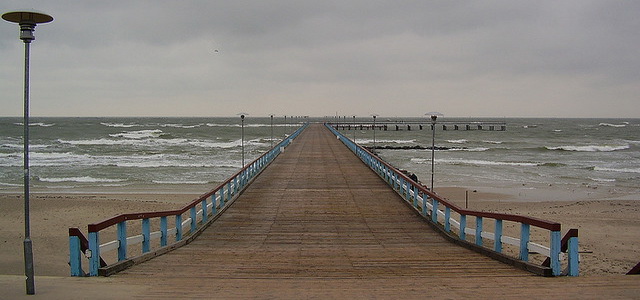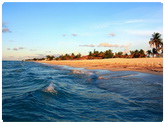| Quick Facts: | Baltic Sea |
|---|---|
| Countries: | Denmark Sweden Finland Russia Estonia Latvia Lithuania Poland Germany |
| Major Rivers: | Neva Narva Vistula Oder Ume Dal |
| Max. depth: | 470 m (1542 ft) |
| Temperature: | Winter: 5 to 6°C Summer: 17 to 18°C |
| Salinity: | Very Low |
| Area: | 414.400 km² (160.000 mi²) |
The Baltic Sea is a semi-enclosed annex of the Atlantic Ocean that separates the Scandinavian Peninsula from the continental Europe. It is connected with the North Sea by the Kattegat and Skagerrak.
The Baltic Sea stretches about 1350 km from east to west between the cities of St. Petersburg, Russia and Kiel, Germany; and about 1260 km from north to south between Lulea, Sweden and Gdansk, Poland.
The Baltic Sea is almost entirely surrounded by European Union member states, the sole exception being Russia. It is surrounded by Denmark, Sweden, Finland, Russia, Estonia, Latvia, Lithuania, Poland, and Germany.
The sea reaches far inland providing many lands of northern Europe with seacoast. The sea has a total area of around 414,400 sq km (160,000 sq miles).
The sea has a low salt content (15 to 5 parts per thousand) because of the inflow of a number of rivers: the Neva, Narva, Western Dvina, and Neman from the east; the Oder and the Vistula from the south; and the Dal, Angerman, Ume, and Torne from the west. Its low salinity as well as the cold climate facilitates freezing.
The Baltic Sea’s deepest point lies near the western coast (1,542 feet, or 470 meters, south of Stockholm) and becomes shallow toward the east and south; its mean depth being only 55 meters (180 feet).
Winds, often changing direction cause the water level to vary considerably. Because of its sometimes violent storms, the Baltic Sea is not reliable for navigation.
The Baltic Sea has been of major strategic importance, both militarily and economically in the history.
The Baltic Sea has served as a crossroads of commercial routes since the Neolithic period as archeological research suggests.
Raw materials flow from northeast to southwest, and manufactured goods take the opposite direction mainly. The Kiel Canal connects the Baltic Sea with the North Sea, and the White Sea–Baltic Canal provides a link to the White Sea.





